Edge Consultants (Edge): Building Energy Modelling and Sustainability Services
Peak Cx: Commissioning and Verification Services
Energy Modelling Informs Design: This involves generating an energy model in tandem with the design team around the project’s specific energy and carbon goals, typically to meet minimum building code energy requirements. This back-and-forth communication between the team is translated into a final deliverable that is an energy modelling report and compliance documentation, which is then implemented into the contract documents (drawings and specifications) used to submit for a building permit to the local authority having jurisdiction (AHJ) or municipality.
Commissioning Verifies Design, Installation & Operation: Commissioning starts with the OPR (Owner’s project requirements) and progresses to the BOD (Basis of Design) which in turn is implemented into the contract documents. Commissioning verifies that the actual performance aligns with the design intent.
Traditionally, Energy Modelling and Commissioning are recognized as two processes that do not overlap but rather work in parallel to ensure a building’s seamless functionality and sustainability.
Unfortunately, working in parallel widens the performance gap. The “performance gap” refers to the disparity between the predicted or expected energy performance of a building, as estimated through energy modelling during the design phase, and the actual energy performance observed during the operational phase after construction.
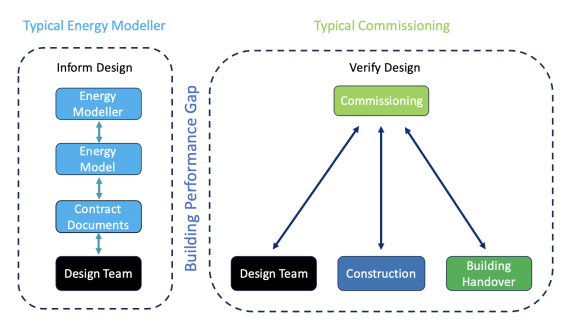
The power of Edge and Peak CX – Empowering Future Designs!
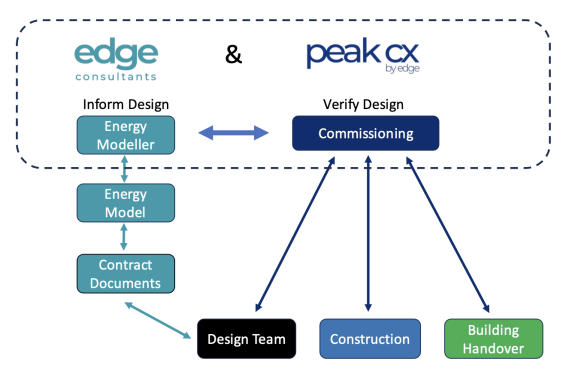
Together, Edge and Peak Cx are bridging the performance gap between predicted and actual building performance. Not only will Peak Cx have consistent communication with Edge, but they will also benefit from accessing the energy report while verifying that the building’s systems and components are designed, installed, and operated in harmony for optimal performance.

Here is a recent scenario that showcases Edge and Peak Cx in action:

Building Type: Warehouse
Location: Lower Mainland BC, Canada
Size: 265,000ft2
Heating: Gas-fired unit heaters
Controls: Programmable thermostats
Energy Model:
- The building is designed to maintain an internal temperature of 15.5°C during the day and set back to 10°C at night to save thermal energy, which, in turn, reduces energy costs and carbon emissions.
- The greater the temperature inside a space relative to the outside, the greater the amount of heat lost to the outside, which needs to be compensated for by the gas-fired unit heaters.
Problem:
- When Peak Cx attended the site to verify the systems, all the gas-fired unit heater thermostats were set at 21°C all the time by the mechanical contractor. No night setback had been programmed.
- The contractor had concerns about receiving cold complaints from tenants once they moved in and stated that the tenants could set their own set points.
Solution:
- Peak Cx worked with Edge to demonstrate that a 2-hour preheat window, as indicated by the energy model analysis, was required to ensure the warehouse would reach the desired temperature by 8 a.m. when tenants would occupy the space.
- Peak Cx and Edge were also able to show the negative financial and carbon impact that maintaining the space temperature at 21°C would have on the building.
- The contractor agreed with this approach once they understood the financial and carbon impact and returned to the site to implement the correct day and night setback temperatures, resulting in the following savings.
- See the analysis below with 3 scenarios:
- A) Design: Thermostats set at 15.5°C with a setback to 10oC at night.
- B) Thermostats are set at 15.5°C all the time with no nighttime setback.
- C) Thermostats are set at 21°C all the time with no nighttime setback.
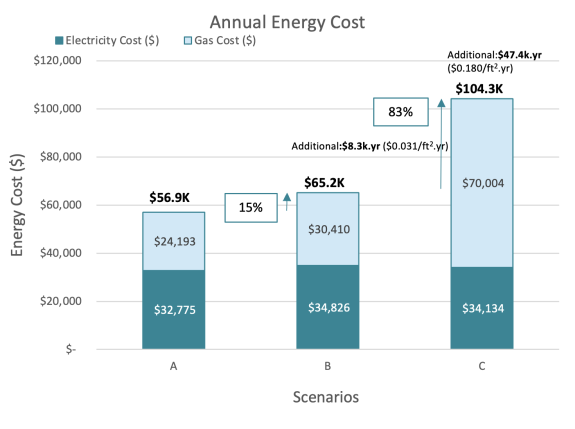
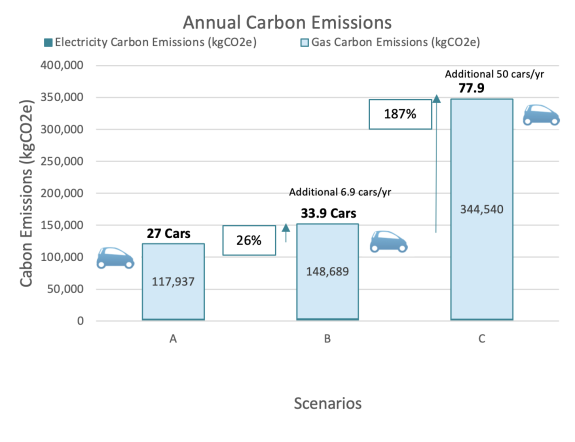
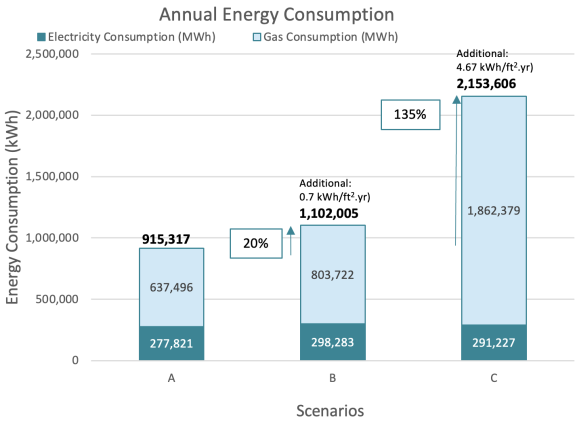
This is why Edge and Peak Cx combined as a service can help significantly lower annual energy costs, carbon emissions, and energy consumption.
Did you know? Set back controls are a mandatory ASHRAE 90.1 requirement? Refer to ASHRAE 90.1-2016, section 6.4.3.3.2 Setback Controls
One comment on “Edge and Peak Cx = A Better-Performing Building”
Comments are closed.